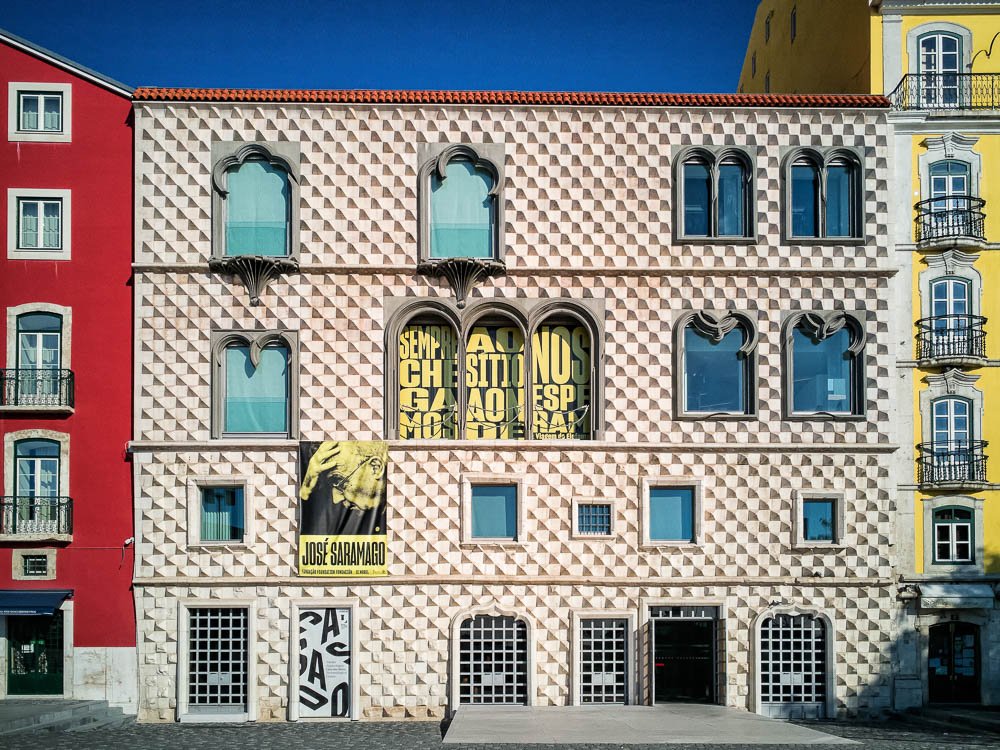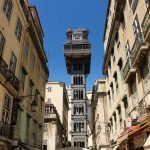Located in the historic Alfama neighborhood, Casa dos Bicos is a remarkable example of early 16th-century architecture. This historic house is distinguished by its unique façade adorned with diamond-shaped stones, inspired by both Italian Renaissance and Manueline styles.
Today, it serves both as an architectural landmark and a cultural venue, hosting exhibitions and housing part of the José Saramago Foundation, named after Portugal’s Nobel laureate in Literature.
In today’s post, I’ll tell you more about this stunning piece of architecture, and give you all the details on how to visit Casa dos Bicos. Trust me, you don’t want to miss the opportunity to see this house with your own eyes!
Casa dos Bicos – in a nutshell
- Highlights: façade with diamond-shaped stones, José Saramago Foundation, archaeological discoveries
- Opening hours: daily, 10 am to 6 pm
- Tickets: standard € 3, children (up to 12) free
- Address: Rua dos Bacalhoeiros, 10
- Nearest metro station: Terreiro do Paço
Index
- History
- Architecture
- The José Saramago Foundation
- Archaeological center
- How to get to Casa dos Bicos?
- Tickets and opening hours
- Nearby attractions
1. History
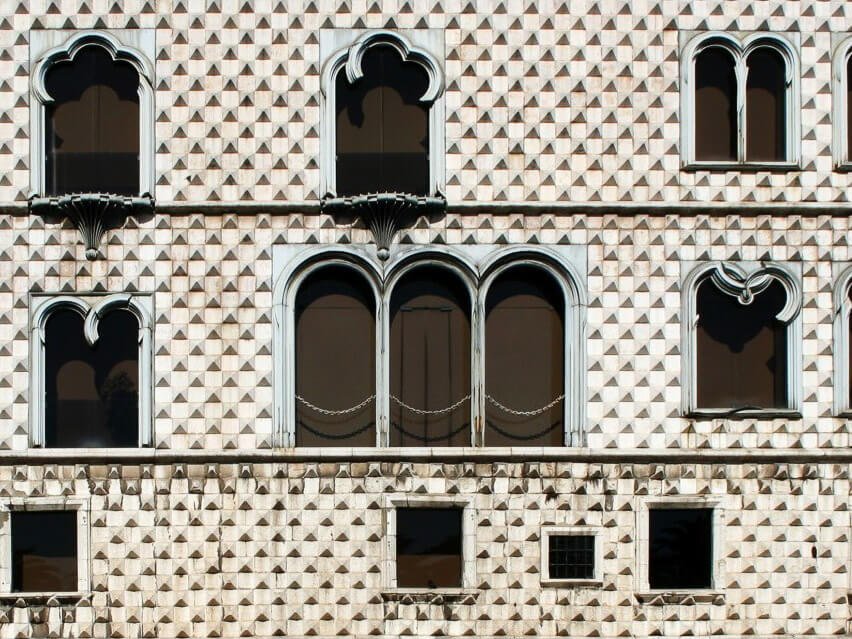
The construction of this house was initiated around 1522 by Brás de Albuquerque, the son of Afonso de Albuquerque, the renowned Portuguese viceroy of India.
Brás played a key role in building this distinctive structure, with its façade adorned with spiked stones resembling diamond tips. This unique design is influenced by Italian Renaissance and Manueline styles, drawing inspiration from Venetian palaces.
In 1755, it was impacted by the earthquake, especially its upper floors. But, despite the extensive damage to much of Lisbon’s infrastructure, Casa dos Bicos remained standing, symbolizing resilience.
At that time, owning “a Casa dos Bicos” was synonymous with considerable wealth and status, highlighting its architectural and social importance within Portuguese culture.
Following the earthquake and the departure of the Albuquerque family, it experienced various uses. For some time, it even served as a storage facility for salted cod, marking a shift from its prestigious origins to more utilitarian roles. Eventually, it was restored and recognized as a significant cultural site in Lisbon.
Today, Casa dos Bicos retains its historical significance while embracing modernity. It houses part of the José Saramago Foundation and hosts various exhibitions, attracting visitors interested in learning more about Portugal’s history.
2. Architecture
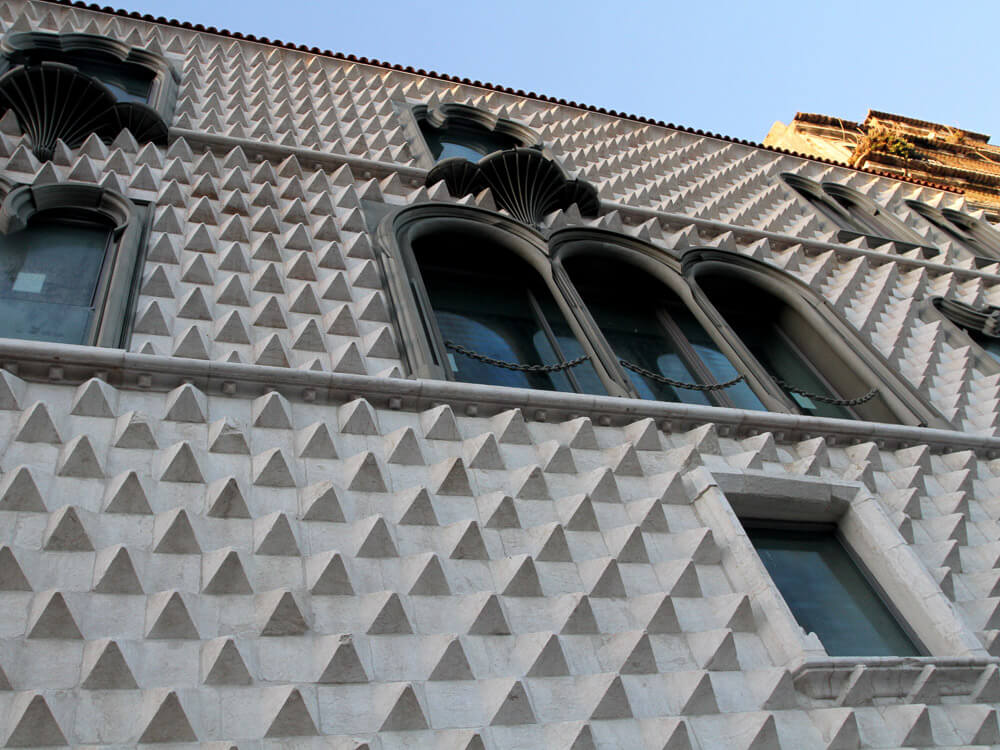
Casa dos Bicos was built around 1522 with the support of Brás de Albuquerque, and designed by architect Francisco de Arruda. The building features a façade inspired by Italian Renaissance structures like the Palazzo dei Diamanti, with over 1,000 stone spikes creating a distinctive diamond pattern. Its historical importance is further enhanced by Mudejar tiles and Manueline-style windows and portals.
Significant changes occurred after the building was damaged in the 1755 earthquake. In the 1980s, Casa dos Bicos underwent restoration and partial reconstruction, guided by historical documents such as pre-1755 drawings and paintings.
During the restoration, archaeological excavations at Casa dos Bicos uncovered Roman and Moorish artifacts within its foundations, including Roman storage tanks and Moorish ceramics. These discoveries are now displayed under glass panels on the ground floor for visitors to view.
Today, Casa dos Bicos stands as a symbol of historical architecture, reflecting Lisbon’s diverse past, from Roman and Moorish influences to the Portuguese Renaissance, all within one remarkable structure.
3. The José Saramago Foundation

In 2012, Casa dos Bicos in Lisbon became the headquarters of the José Saramago Foundation, dedicated to the life and works of one of Portugal’s most esteemed writers. Now, visitors can explore exhibits that cover various aspects of Saramago’s illustrious career and his contributions to literature.
The upper floors of Casa dos Bicos are particularly engaging for both fans and scholars, as these areas house collections related to Saramago’s professional life, including his Nobel Prize for Literature. Besides that, there are international editions of his books in multiple languages, personal notes that offer insights into his writing process, and a variety of photos and videos from his life.
Other highlights of the foundation include Saramago’s personal library, which is open for public viewing, and a replica of his first office, adding a personal touch to the experience. And, of course, there’s also an onsite shop where visitors can buy his books in various languages.
Outside, José Saramago’s ashes were scattered next to an olive tree from his hometown. This thoughtful tribute not only honors him but also symbolizes a return home for this revered Portuguese writer.
The legacy of Saramago persists through each element maintained at this significant location, creating a meaningful and symbolic homage. So, if you’re a fan of his works or are curious to learn more about him, visiting this house is a must!
4. Archaeological Center
On the ground floor of Casa dos Bicos in Lisbon, you’ll find an archaeological site within the Lisbon Museum network. This area, revealed in 2010, showcases important historical findings from recent excavations, offering insight into more than two thousand years of urban development.
One of the key discoveries includes remains from Olisipo, the ancient name for Lisbon during Roman times. Visitors can observe remnants of a Roman fish production unit dating back to the 1st century CE, which helps understand the economic activities that were essential to ancient communities and offers an understanding of their daily life and industrial practices.
Additionally, the site features significant architectural pieces that enhance our knowledge of historical defense tactics used in Olisipo. These include parts of a Roman wall and a semi-circular watchtower from the late 3rd century CE. These elements were crucial for protecting the city, highlighting how its residents coped during unstable times.
The artifacts at Casa dos Bicos serve as valuable resources for historians, archaeologists, and visitors who want to explore Lisbon’s history through the physical evidence left by previous inhabitants. It’s really fascinating, and I highly recommend checking them out!
5. How to get to Casa dos Bicos?
Reaching this attraction is very easy and straightforward, since it’s close to major transport points and has a very central location in Lisbon, at Rua dos Bacalhoeiros, 10.
In my opinion, the easiest way to get there is by metro, as the nearest station, “Terreiro do Paço” on the blue line, is just a 5-minute walk away.
Alternatively, if you’d rather take a bus or tram, there are several lines that can bring you close to Casa dos Bicos. Bus numbers 728, 735, 759, and 794 all stop within walking distance, while tram lines 12E and 28E also pass through the area.
6. Tickets and opening hours
Casa dos Bicos is open to visitors from Monday to Saturday, from 10 am to 6 pm, with the last entry at 5:30 pm. Tickets can be bought online or at the site. Standard tickets are priced at € 3, while family tickets are available for € 8.
Students can enjoy a reduced rate of € 2 upon presenting a valid student ID, and children under the age of 12 can enter for free, making it an ideal destination for educational visits by school groups and families.
If you’re interested in broader cultural experiences in Lisbon, Casa dos Bicos also offers a joint ticket for € 6. This grants entry not only to Casa dos Bicos but also to other parts of the Museum of Lisbon network, including Pimenta Palace, Saint Anthony Church Museum, and the Roman Theatre Museum.
Additionally, guided tours are available for an extra € 6 per person, providing detailed insights into the architectural and historical importance of these sites. However, these tours must be arranged in advance by contacting the Foundation managing Casa dos Bicos.
7. Nearby attractions
Casa dos Bicos is not just a historical site but also an excellent starting point for exploring nearby attractions in the city.
One such landmark is the Igreja da Conceição Velha, renowned for its architecture that survived the 1755 earthquake. Along with Casa dos Bicos, this church offers valuable insights into Lisbon’s history and architectural resilience.
A short walk away, you can explore the Lisbon Cathedral, which was also affected by the 1755 earthquake. It has been preserved and provides a glimpse into medieval religious life in Portugal.
Nearby, Praça do Comércio, located along the Tagus River, features public spaces and monuments such as the Arco da Rua Augusta, symbolizing Lisbon’s recovery from past adversities.
Other attractions include Igreja de Santo António, which honors Saint Anthony of Padua, who is believed to have been born nearby, and the Museu do Aljube, which presents exhibits on the resistance against dictatorship in Portugal.
History enthusiasts will also find the ruins of the nearby Roman Amphitheater fascinating, as they provide an opportunity to see ancient Roman structures within the modern landscape of Lisbon.
Casa dos Bicos: an essential destination for literature and architecture enthusiasts
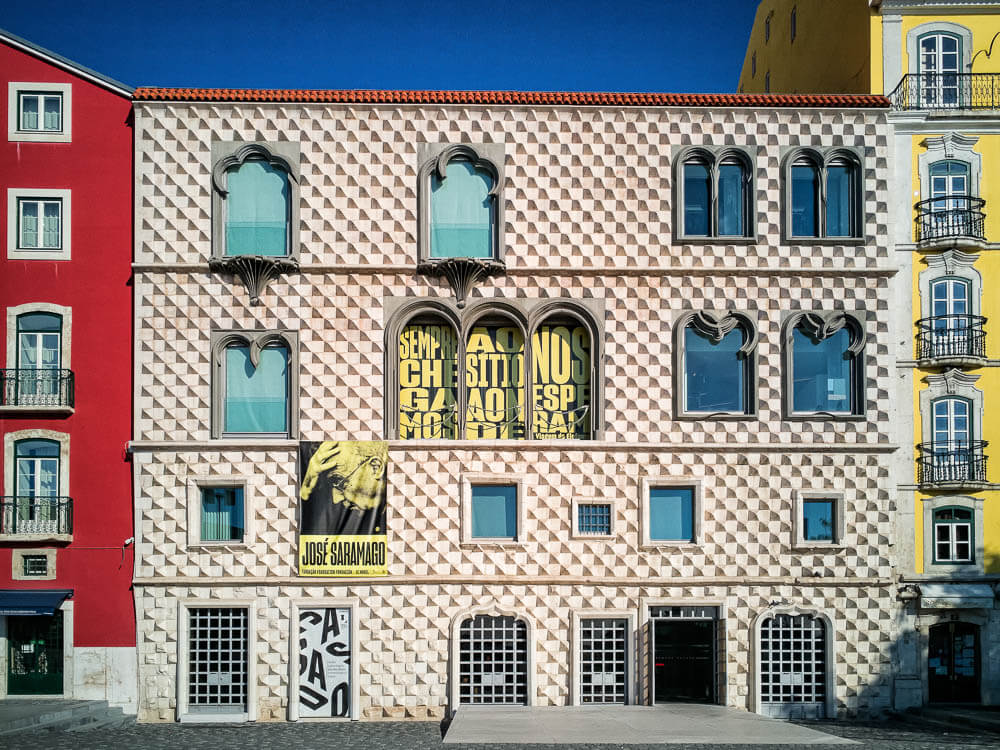
Casa dos Bicos is a must-visit place for both literature and architecture enthusiasts. The building’s façade by itself makes it worth visiting, with its stunning diamond-shaped stones and Manueline-style architecture.
But more than that, it houses the José Saramago Foundation, honoring one of the greatest authors of all time. It’s a place that invites visitors to learn about his work and life, attracting both fans of Saramago and those interested in Portuguese literature.
The ongoing preservation of Casa dos Bicos not only honors Saramago’s literary legacy, but also protects a vital part of Lisbon’s architectural history for future generations to appreciate and enjoy.

